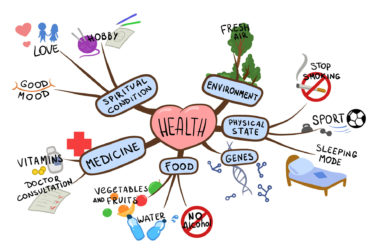The past decade has been great for health data. As a result of mandating EHRs via the HITECH Act in 2009, health marketers now have, at their disposal, an abundance of electronic (i.e., usable) health data, being provided by innumerable data suppliers. And being “data-driven” is now a non-negotiable marketing skill.
Yet, frustrations abound with regard to data-driven marketing. One of the drivers of these frustrations lies upstream in the marketing process: the data itself. While health data sounds like something objective, a uniform widget that you should be able to buy, in reality not all health data is created equal.
If you’re a marketer working with data to target media, personalize journeys or experiences, or measure campaigns, here’s what you should consider when picking a data supplier.
1. Type of Data: Deterministic or Probabilistic
First, understand what type of data is being provided. Deterministic data, also referred to as first-party data, is actual information based on real users, and is known to be true. On the other hand, probabilistic data is derived data, and is based on relational patterns or statistically driven outcomes.
The validity of probabilistic data is predicated on two things: the size of the underlying database, and the accuracy of the models. In large categories where we can identify big statistically significant samples, and where we know a lot about relational significance, probabilistic data can work. But modeled data sets don’t work for smaller or newer categories, and even in more established conditions, you’re going to see a fairly high margin of error.
In contrast, with deterministic data, you know you’re targeting a real person. If the data provider has a solid verification process, you can be even more confident that your dollars are being used to reach or measure the person you’re targeting.
2. Coverage: Portion of Universe Covered
Next, ask about coverage. The data supplier will be able to tell you what percent of your universe they can reach. Your goal should be to get as close to 100% coverage as possible, preferably with deterministic data. Higher coverage means you’re more likely to reach all candidates in your target. Also, a wider data set of “real” records ensures that your measurement and feedback systems are more reliable.
Ask your supplier about their coverage. And find out about the balance of first-party and derived data they use to get to that coverage.
3. Consent: Active and Direct
Consent refers to the permission people give us to market to them. It originally came about to regulate email marketing (in fact email marketing used to be called permission-based marketing), but now, post GDPR and CCPA, applies to digital advertising as well.
There isn’t only one way to get consent and not all consent is equal. The gold standard of consent is as follows:
- Consent should be active, where people actively opt into the program (vs. passive consent based on an opt-out).
- Consent should also be clear and comprehensive, meaning the person providing consent should understand what they are consenting to.
- Finally, consent should be specific to the organization that will be using the information, vs. applying broadly to “partners or affiliates.”
When you’re buying data, you’re also buying the consent to use it. Find out what kind of consent your supplier has gathered.
4. Aggregation: Linking Different Data at the Individual Level
A lot of health data is out there, but it’s extremely fragmented. Prescription data is separate from lab and other reimbursement data. Socio-demo, retail, and “wearable” health data come from yet other sources. HCP data is not connected to the hospital they work at.
That’s why a question to ask your data provider is around aggregation of disparate data. How much information have they aggregated about each individual covered? And with what level of confidence, and confidentiality?
Confidentiality, or privacy, is such an important consideration with regard to health data that we’re assuming it’s implicit. But it gets complicated when aggregating data. If your supplier is aggregating data, they will need to demonstrate their ability to link records in a privacy-preserving/de-identified way. Watch Jason LaBonte, Chief Strategy Officer at Datavant, discuss this topic in more detail here.
5. Connected Data: Linking Cross-Individual Data
If relevant, it’s important to know if your data supplier has ways to connect non-parallel data sets, such as patient to physician or physician to hospital. This 360-degree view on the health decision process could enable you to manifest a holistic push-pull marketing experience with immediacy and speed.
Not all data providers can do this. But it can be done.
6. Time Lag: Immediacy of the Data
Any data is available if you wait long enough for it to be scrubbed, cleaned, and combined into the right usable formats. But the usefulness of the data diminishes logarithmically with time, while the margin of error goes up.
The sooner you receive data, like when a person saw your ad or read your email and took an action, the sooner you can respond with radically personalized messaging. The quicker you know which combination of messaging drives real-world impact, the more responsible your spend.
Find out what your data supplier’s time lag is for their data. Three months is way too long. So is one month. With automation progressing at such a rapid rate, you should be able to get close to real-time data and data updates, in an actionable format.
In summary, when determining what health data provider to use, consider the following questions:
- How much of your data is deterministic?
- What’s your coverage of my universe?
- How active and explicit is your consent?
- How much do you know about each person? Is it privacy-preserving?
- Can you connect person-level data across groups?
- How quickly can you turn around data and updates?








